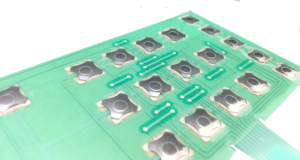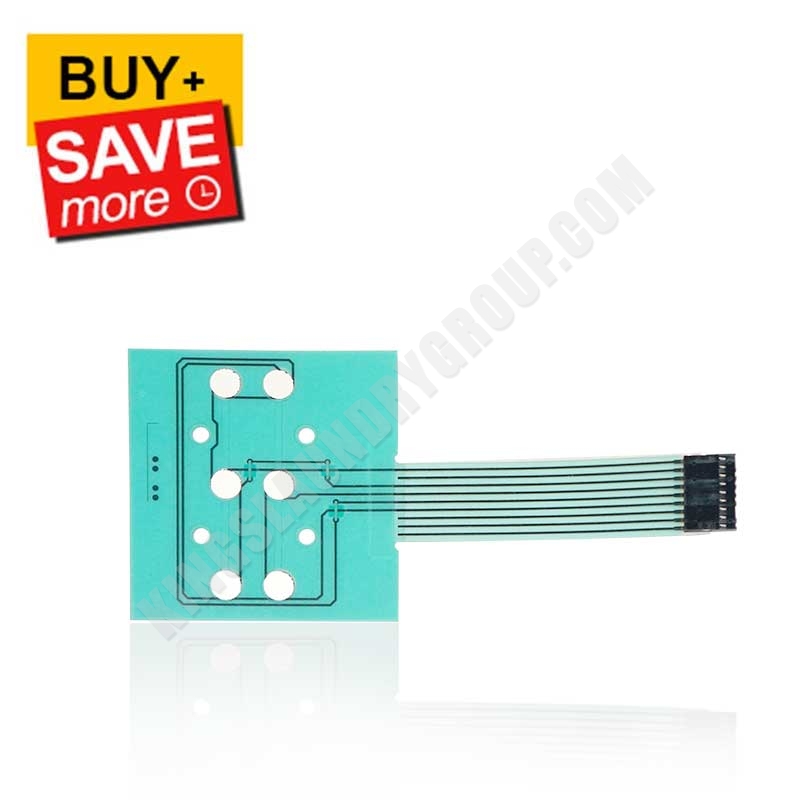The Function of a Membrane Switch in Modern Touch Interfaces and Controls
The Function of a Membrane Switch in Modern Touch Interfaces and Controls
Blog Article
Just How Membrane Changes Contribute to the Longevity of Electronic Control Panels
Membrane layer switches play an important role in boosting the resilience of electronic control panels, mostly via their multi-layered building which gives efficient defense versus environmental aspects such as dampness and dirt. This design not just minimizes the threat of circuit damages and rust yet additionally advertises simplicity of upkeep due to its seamless surface area. The absence of moving parts substantially reduces the chance of mechanical failings, making membrane layer switches ideal for requiring applications. Nonetheless, the implications of these functions extend beyond plain security, raising concerns concerning their wider influence on functionality and individual experience.
Interpretation of Membrane Buttons

Membrane layer buttons are developed to be thin and light-weight, making them appropriate for applications where area is limited. They can be produced in numerous forms, dimensions, and colors, using adaptability in layout that fulfills aesthetic and functional demands. Additionally, membrane layer switches can include numerous modern technologies, such as tactile feedback and LED signs, boosting individual experience.
Because of their construction, membrane layer switches are often resistant to dirt, dampness, and basic wear, adding to their sturdiness sought after settings. Their seamless style not only promotes very easy cleansing however also minimizes the danger of mechanical failing, making them a recommended selection for producers seeking reputable customer interfaces in their digital control panels.
Defense Against Environmental Aspects
The layout of membrane layer changes inherently offers a degree of defense against numerous environmental aspects, which is essential for maintaining functionality in tough conditions - Membrane Switch. These buttons are generally created with layers of flexible materials that protect inner elements from dampness, dirt, and pollutants. By enveloping the circuitry, membrane changes decrease the threat of short circuits and deterioration, which can significantly impair efficiency
In addition, the use of durable adhesives and sealers during production improves their resistance to environmental obstacles. Membrane layer switches can withstand exposure to chemicals and solvents, making them suitable for industries such as food processing and healthcare, where health and tidiness are extremely important. Their smooth surface area design also protects against the build-up of dust and microorganisms, promoting easier cleansing and maintenance.
Temperature level changes are another environmental concern, and membrane switches are crafted to work successfully across a wide variety of temperature levels (Membrane Switch). This adaptability ensures that control panels remain functional in various settings, from industrial environments to customer electronic devices
Influence On User Communication
Customer interaction with digital control board is substantially affected by the layout and functionality of membrane buttons. These switches give a responsive user interface that enhances the overall customer experience, permitting user-friendly navigating and control. Their receptive nature makes sure that customers get prompt feedback upon activation, which is vital for jobs requiring precision and effectiveness.
Moreover, the smooth surface area of membrane switches assists in simple cleaning and upkeep, advertising user self-confidence in the dependability of the user interface. This cleanliness is specifically vital in settings where health is paramount, such as clinical or food handling settings. Furthermore, the portable and light-weight style of membrane layer changes contributes to the visual allure of control board, encouraging individual interaction with a contemporary and sleek appearance.
Furthermore, the integration of visual aspects, such as published symbols and backlighting, aids customers promptly identify features, minimizing the learning contour linked with brand-new equipment. Because of this, customers can operate gadgets better, causing boosted productivity and complete satisfaction. In summary, look here membrane switches play an essential function in improving user interaction by integrating performance, looks, and convenience of use, ultimately causing boosted functional performance.
Design Adaptability and Customization
Design versatility and personalization are crucial elements of membrane buttons, allowing producers to customize digital control board to particular applications and customer demands. This versatility enables the assimilation of numerous layout components, such as shades, graphics, and textures, which can improve the aesthetic allure and user involvement of the control panel.
Membrane layer switches can be tailored in size and shape, suiting a vast variety of devices and applications, from industrial machinery to customer electronic devices. This flexibility makes sure that manufacturers can create intuitive user interfaces that line up with customer expectations and functional needs. Additionally, the capability to incorporate distinct attributes such as backlighting or responsive comments even more boosts functionality, enabling for an extra interactive experience.
Moreover, the Discover More manufacturing process for membrane layer switches over sustains the quick prototyping of styles, making it possible for makers to iterate and fine-tune their ideas quickly. This capacity not just increases the development timeline yet likewise guarantees that the end product meets particular useful and aesthetic criteria.

Cost-Effectiveness and Durability
Cost-effectiveness and longevity are considerable benefits of membrane buttons, making them an attractive choice for manufacturers and end-users alike. These buttons are generally less costly to produce than typical mechanical switches, largely as a result of their streamlined production procedures and the decreased number of elements needed. This cost benefit extends not only to initial production however also to lasting functional costs, as membrane buttons frequently call for less maintenance and have a her comment is here reduced failing rate.
Moreover, the long life of membrane layer changes adds to their overall value. Constructed from resilient products, they are immune to environmental variables such as wetness, dust, and chemicals, which can bring about early wear in other button kinds. The lack of relocating components reduces mechanical failing, permitting membrane switches to preserve capability over expanded periods.
This durability is particularly beneficial in applications requiring consistent performance under requiring conditions, such as clinical gadgets and industrial equipment. Eventually, the mix of cost-effectiveness and long life makes membrane layer switches an economically practical choice for makers, providing trustworthy services that withstand the examination of time while maximizing monetary considerations.
Final Thought
To conclude, membrane switches substantially boost the resilience of digital control panels via their durable building and construction and safety attributes. By successfully protecting circuitry from ecological hazards and reducing the risk of mechanical failing, these buttons ensure consistent performance in demanding applications. The seamless layout advertises health and ease of upkeep, while personalization choices enable customized options for different demands. Generally, membrane layer switches represent a trustworthy and affordable option for improving the long life and capability of digital control systems.
Report this page